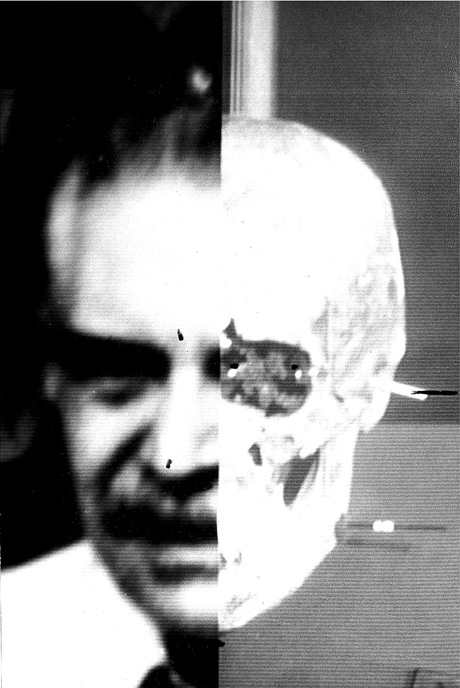Hello again. I’m Christian Perfect and it’s time for another Internet Maths Aperiodical.
I’m suffering from the post-holiday blues. I’ve cast my Rubik’s cube aside, unsolved; I’m fed up with the public’s appalling ignorance of Gauss facts; worst of all, I’ve made no progress on my New Year’s resolution to learn a different sorting algorithm each day.
Maybe the Aperiodical can help. Let’s see.
Here’s a bit of almost-maths: Nature published an article titled “Scientists make the ‘perfect’ foam” about some scientists who did exactly no such thing. They’ve found (and produced in real life) a slightly more efficient, much less elegantly described, bubble structure than the incumbent imperfect foam, but still no proof of its idealness. Maybe “Scientists make foam with possibly some imperfections” was refused by the editor in charge of eye-grabbing titles.
Two sets of people appear to have ignored Gauss recently, which is an error that shouldn’t really be made even once. First on my radar were Vladimir Putin’s supporters, whose vote-fiddling antics were made apparent by the divergence of certain graphs from the expected Gaussian distribution. Opposing Gauss-appreciative Russians did not miss the opportunity to make some very nerdy placards. There is some explanation of the exact nature of the tomfoolery at this English-language blog post.
Those Italian scientists who were worried they’d measured neutrinos going faster than light might have been assuming normal distributions where they shouldn’t have, according to this blog post by another high-energy particle physicist. An update to the post says that maybe that didn’t matter, anyway. Ladies and gentlemen: statistics!
Here’s a page entitled, “Watch me SOLVE a 20x20x20 cube!” It begins with a bit of fun counting-maths about what it means to solve such a big cube, then there’s a slideshow of the (simulated) cube being solved, with some explanatory text.
I hear you asking who the titular “me” is. You’re right, it probably isn’t anyone famous. Well, here’s a video of heavyweight biopic champion of the world Will Smith solving a Rubik’s cube on French TV. Will Smith’s best days are behind him, you say? You want a younger, more famous celeb? Then here’s teenage heartthrob-of-the-moment Justin Bieber solving a Rubik’s cube on Spanish TV. Still too old, you say, and you’d prefer the celeb-on-cube action to take place in God’s Own America? Happy to oblige. Here’s a somewhat younger Justin solving the cube for Radio Disney in the US.
But celebrities present an image of unattainable perfection. Surely no real person could solve the Rubik’s cube? But expectations have been raised! You will be looked down upon if you do not have this trendy skill.
Well, cancel the booking at that expensive Hollywood brain clinic because standup mathematician Matt Parker has the answer: he has made a video explaining how any idiot with a couple of working hands can take advantage of group theory to make it look like they can solve Rubik’s cube.
Next up is a page making the radical claim that the Great Pyramid at Giza was not built by aliens like we all thought we knew, but by simple humans with knowledge of just enough geometry to get by. I genuinely have no idea if anything on his site is correct. I present it with no further comment, so that you may enjoy this self-effacing old man’s fresh insights as much as I did.
Did you know that HTML with CSS is Turing-complete? It is. These days, I just assume that anything at least as complicated as a cooking recipe is Turing-complete and I’m not often wrong.
A certain school of thought holds that some people learn more effectively through certain senses. Some people take in facts best through their ears, the theory goes, and some learn quickest from visual stimuli, while others don’t really understand something until it’s been up their nose.
Anyway, I think I learn things best through dance. These joyous choreographies of various sorting algorithms performed by an assortment of Central-European dance troupes certainly taught me how to smile, and a little bit about the natural order of the numbers one to nine.
I’ll finish with some properly interesting maths links.
An Alan H. Schoen of The Internet, USA runs a website called Geometry Garret containing “A Pot-Pourri of People, Pictures, Places, Penrose Patterns, Polyhedra, Polyominoes, Posters, Posies, and Puzzles.”
Somebody recently posted Morpion Solitaire to metafilter.com. Morpion Solitaire is a very interesting pen-and-paper game for which the best possible score is still now known. You can click through the links on the metafilter thread, but I wanted to highlight the browser-based version of the game.
I’ve found a few good papers for my Interesting Esoterica collection recently. I’ll share two here.
One presents a zero-knowledge protocol for playing mental poker. If you don’t know what a zero-knowledge protocol is, give your parents a copy of “how to explain zero-knowledge protocols to your children” by Quisquater and Guillou, and then get them to explain it to you.
The other sets out to answer the question, “How does one optimally use a snowblower to clear a given polygonal region?” You’ll notice that nothing in this edition of the Aperiodical so far has been NP-complete. Can you guess how hard the snowblower problem is?
That’s all for now. The Aperiodical has cheered me up and I hope it’s cheered you up too. Thanks for being interested in maths!
 Science Sparring Society is the new podcast from ACMEScience. It is a history show that focuses on the great rivalries from science. I would like to thank Frank Swain for the idea behind this show. I do hope that you enjoy the show, and please let all of your friends know about it if you do.
Science Sparring Society is the new podcast from ACMEScience. It is a history show that focuses on the great rivalries from science. I would like to thank Frank Swain for the idea behind this show. I do hope that you enjoy the show, and please let all of your friends know about it if you do.
